It seems like just a few years ago that the only quality wine makers using the screwcap (or Stelvin) were either in New Zealand or named Randall Grahm. They're now practically everywhere as people are finally starting to realize that there may be a better way to seal wine bottles than with 17th century technology. Thankfully the Stelvin seems to be winning out over those horrible plastic corks but several other alternatives are now competing to become the new standard. Let's take look at the major contenders today: the Stelvin as well as the Zork, Vino-Lok and Crown Cap. Since the jury is still out on how well wines can age in these new (and old) fangled devices, we'll be assessing them mainly on their aesthetic appeal.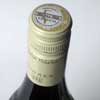
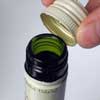
Stelvin
While the cork is 17th century technology, the screwcap is from the 19th century. Patented by Dan Rylands in the UK in 1889 it found its first practical use on whiskey bottles, replacing the corks there as well. In the 1950's the Stelvin cap that we know today was developed in France specifically as a wine bottle closure and is still a registered trademark of French manufacturer Pechiney. Originally used only for the cheapest wines, a stigma developed that has only recently been broken. The Stelvin here seals a 2005 Torres Vina Sol, the kind of clean young refreshing and inexpensive wine you'd expect to find under a screwcap. Stelvins still seem very casual compared with the ritual of the corkscrew so if you want to add a bit of ceremony take a look at this odd movie - Vive La Screwcap - brought to you by Bonny Doon Vineyards. (Note: Vina Sol is the easiest way I know of to try the featherweight and reasonably obscure Paredella grape variety) Overall assessment: Quick, clean, no frills Zork 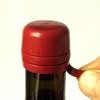
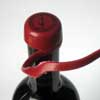

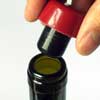
The Zork is a thoroughly modern wine closure. Developed in 2002 in Adelaide, Australia, the Zork is an attempt to retain the rituals of uncorking without the drawbacks of cork. A small plastic sealing ribbon is twisted off and the cap is then pulled out with an audiple “pop.” It seems to be made of the same material other plastic corks but since it's pulled out by hand it won't get stuck to your corkscrew like a big wad of gum. The 2003 d'Arenberg Cadenzia that this Zork seals is also a thoroughly modern creation. Silky smooth but with refreshing acidity, buttery vanilla, blackberries and a smoky BBQ somewhere in the background, it's a virtual meal in a bottle. Wearing a Star Trek outfit during the tasting would have neatly completed the picture. Overall assessment: A good update on the original process of popping a cork. Vino-Lok 
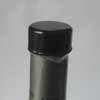

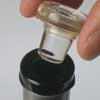
Glass stoppers are actually as old a method as cork for sealing a bottle, but lost out due to practical reasons. To get a tight seal requires a high degree of precision so stoppers had to be custom ground. A perfectly ground stopper could then be impossible to remove making the whole effort futile. The Vino-Lok recently developed by Alcoa brings back this traditional closure with an update: the seal is now formed by a small clear soft ring integral to the stopper. It's easily the most elegant looking closure and like the Zork, there's also a ritual to opening it. A plastic wrapping is removed revealing an aluminum cover which is then twisted off to reveal the shiny glass stopper. The only disappointing part is in the actual dislodging. Instead of a pop, the stopper opens with a fairly disconcerting click. It almost sounds like something broke but when the slight panic recedes, in hand is a very stylish piece of moulded glass. I expected the wine to be equally stylish and clean, but -- irony of ironies -- it had a slight brett infection. The sweaty saddle notes just didn't quite fit. It was if a supermodel had just farted. Worse yet, the 2004 Salomon-Undhof Kremstal Riesling also had a predominant aroma of gooseberries and grass, almost textbook Sauvignon Blanc and less than impressive for an Austrian Riesling. Overall assessment: a very elegant closure even if the wine wasn't. Crown Cap 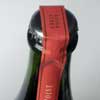

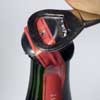
Originally know as the Crown Cork, it was invented by William Painter in Baltimore 1891, 2 years behind the screw cap. Wait a minute that's a bottle cap! Just how cheap can you get? Actually it's the way all Champagne (and traditionally made sparkling wine) bottles are sealed throughout the wine making process. The crown caps are removed during dégorgement (removal of sediment) and replaced with corks, wire muzzles and foil before dispatch. So yes, P. Diddy, your bottle of Krug once donned a crown cap. Yo! It certainly lacks the theatre involved in popping a Champagne cork but ironically makes the whole experience more serious. Read: this is a wine to be consumed and not sprayed in the locker room or Grand Prix winner's circle! No doubt, the 2002 Green Point Vintage Brut Rosé tasted here was certainly in character. Made by Moet and Chandon in Victoria, Australia it's a serious bubbly with a fine mousse and aromas of biscuits , flowers and strawberries. Very dry and very good. Overall Assessment: Interesting, but not fun. Of course you can still saber it off if necessary! Conclusion: 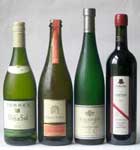 We'll have to wait and see how the different closure types will be accepted. Since it's not the kind of standard like competing DVD encoding technologies that require buying a different player to work, I can imagine we'll start to a lot of different wine enclosures in the next couple of years. I particularly liked the elegance of the Vino-Lok but also found the Zork with the 'ol cork pop still intact very appealing. Poll:
We'll have to wait and see how the different closure types will be accepted. Since it's not the kind of standard like competing DVD encoding technologies that require buying a different player to work, I can imagine we'll start to a lot of different wine enclosures in the next couple of years. I particularly liked the elegance of the Vino-Lok but also found the Zork with the 'ol cork pop still intact very appealing. Poll:
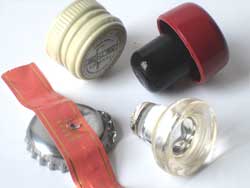

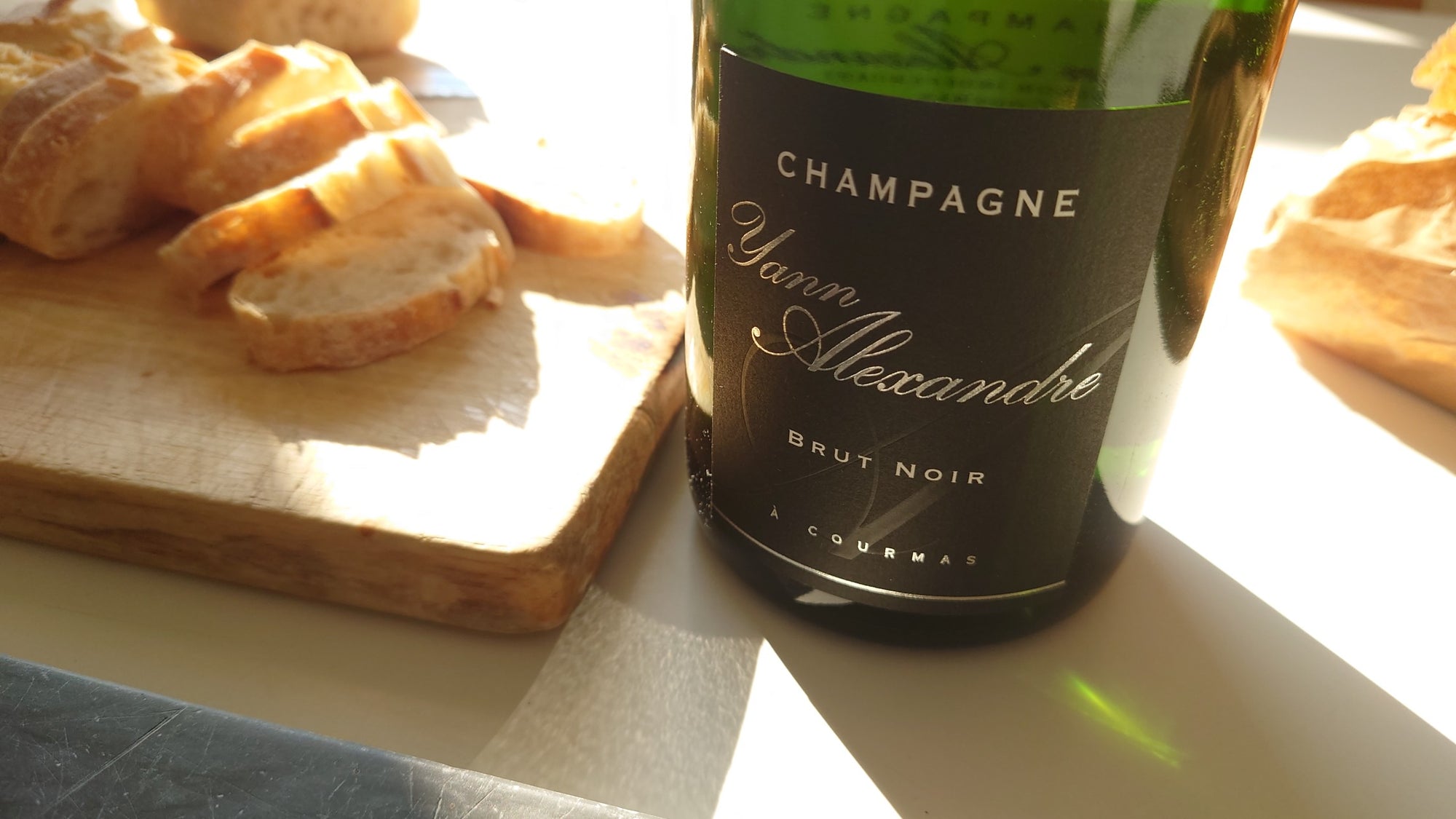
Comments
Don’t want to sound picky, but the use of “Stelvin” in place of screw-cap or twist-off is no more correct than using “Kleenex” when talking about facial tissues. Stelvin is one brand of screw-cap, assuredly the best known, but it is not the only manufacturer.
By the way, I am TOTALLY in agreement that they are vastly better than rubberized/synthetic corks!!!
Thanks, Karen. The absolutely worst case is cellaring a wine for many years and then finding it to be corked. You can’t exactly return it!
Thanks for update on the Australian scene, Edward. Your Good Cork, Bad Cork post is an excellent illustration of natural cork failure and an excellent case for the Diam. And too bad the Zorks aren’t taking off.
Thanks for the clarification, Tom.
Who put “Taps on large barrels of wine” in the poll? Now there’s a civilized solution. . .
Great rundown of all the closure options. Actually, I’m grooming myself as a specialist in New Zealand wines, and I’m very much enamored with their championing of the screw cap. Although I love how the producers of wines who’s retail prices range between US$9.99 and $39.99 have created stylish and personalized packaging using the screw cap, I voted for Zork after reading your treatment.
I’m going to take a bottle of the Red Knot Mc Laren Vale Shiraz 2004 home and unravel that Zork just to give the closure and the wine a try. I’m going to posts my results on my My Space blog.
We recently received a trio of wines, Bordeaux style blends from Napa Valley called Used Automobile Parts. The box was very cool looking (didn’t remind me at all of the chop shop) but what was interesting was that each of the three bottles was closed with a different closure – one Zork, one screw cap, one Vino Lok. However, at $79.99, although I don’t doubt the wines are fantastic (I was off the day we tasted it), it’s kind of an expensive experiment.
One question: Do I understand correctly that Stelvin is a brand of screw cap? Is it the only brand used in the wine industry? Is it the most widely used brand?
OK, that was three questions.
Cheers,
Vee
Thanks, Vee. The Zork is cool — it’s sad to hear from Edward that it isn’t catching on. I also ran across the Sebastiani Used Automobile Parts in my research but it isn’t available in the UK. It would be an interesting blind tasting to see if there was any difference between the 3 closures.
Stelvin is a brand of screw cap and is the most widely used brand, which Tom pointed out. I’ve tried to find the names of other brands but they’re usually only referred to in the context that there are more screwcap manufacturers than Stelvin.
Hi Steve,
A few points of clarification. Stelvin is the original brand of screw caps for wine, made by Alcan (formerly Pechiney) in various plants around the World. Alcoa’s brand is LongCap and other producers (including a couple here in Australia & 2 more in N.Z.) also have their own brand. It’s all academic, as they all use the same liner technology to seal the wine in and keep the air out, which is the aim of all good closures (including corks by the way…). They have taken off in A&NZ as the incidence of cork faults was simply unacceptable & very wide-spread (not just taint, but random oxidation and leaks & crumbling corks etc).
Winemakers here used a variety of closures for differing price points historically, but now screw caps are reliably replacing cheaper natural & agglomerate corks, and many synthetic closures too.
Wineries around Adelaide tried the Zork (or was that Dork?) originally as it was invented there, but even after 3 versions they still have the same issues as other synthetic corks in terms of flavour scalping and oxidation over just a few months storage. They can be re-inserted after opening, but as they create a positive pressure in the bottle, don’t lay the bottle down, as they will push out by themselves!!!
Vino-Lok is seen in Australia (as in other discerning wine markets) as the closure of choice for premium wines. The glass closure is more expensive than premium natural corks, but can be guaranteed to be taint free, seal as well as a screw cap, and be resealed without pushing out again. (You can tip the resealed bottle upside down & it will hold!). The major benefit of course is the image, it looks really classy, so the presentation at the table to your guests is superb. You can store these babies for years and be certain they’ll open without fuss and be as good as the winemaker intended them to be.
Cheers!
Nice post Steve.
I am a screwcap convert, and happy to see that some of the other readers feel the same way. I think we’ve all heard enough propaganda from the Cork Mafia, and are ready to move on to a truly better closure.
[…] Then, head over to the De Long Wine Moment blog and read Steve’s Comparison of alternative closures. […]
Thanks for the detailed clarification, Kim. I’ll assume you don’t like the Zork! I did like that it popped but the Vino-Lok is much more elegant. However, my Vino-Lok bottle did leak — the stopper popped out when I resealed it and put it on its side in the fridge. It may have something to do with the brett infection that was brewing away.
Hi Jathan, thanks for the comment and the link back. One question: does Randall Grahm play the sommelier in Vive Le Screwcap?
I think that the screw cap seems to be the winner. something that is being represented by the sheer amount of wine makers taking them on, pity if you make corkscrews for a living.